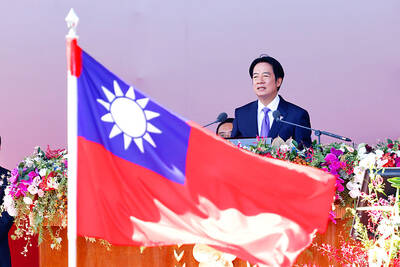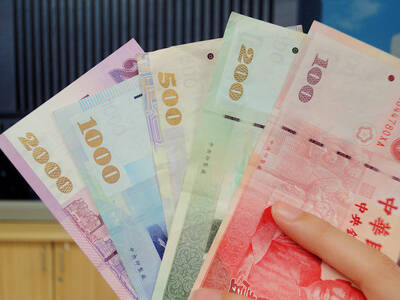China said yesterday the number of people living in cities exceeded the rural population for the first time, a historic shift that experts said would put a strain on society and the environment.
The change marks a turning point for China, which for centuries was a mainly agrarian nation, but has witnessed a huge population shift to cities during the past three decades as people seek to benefit from rapid economic growth.
Urban dwellers now represent 51.27 percent, or 690.8 million people, of China’s entire population of nearly 1.35 billion, the Chinese National Bureau of Statistics said.
In 1982, only one-in-five people lived in cities. By 1990, urban dwellers represented 26 percent of the total population, a figure that rose to 36 percent in 2000 and jumped faster during the next decade to 51.27 percent.
The bureau added that China had an additional 21 million people living in cities by the end of last year compared with a year earlier — more than the entire population of Sri Lanka — while the number of rural dwellers fell.
“Urbanization is an irreversible process and in the next 20 years, China’s urban population will reach 75 percent of the total population,” said Li Jianmin (李建民), head of the Institute of Population and Development Research at Nankai University. “This will have a huge impact on China’s environment and on social and economic development.”
A significant portion of those moving to cities are migrant workers, who have helped fuel China’s rapid growth.
A national census published in April last year counted more than 221 million migrants and a government report released months later predicted that more than 100 million farmers would move to cities by 2020.
However, migrants are often treated as second-class citizens in the towns or cities they live in because they are still registered as rural residents and have little or no social security.
“We’re already seeing some of the destabilizing aspects of [urbanization] because China’s political and administrative system hasn’t caught up with the economic and social reality,” China Labour Bulletin spokesman Geoffrey Crothall said.
He said many people still classified as rural residents now form major portions of the population in many cities throughout China.

People can preregister to receive their NT$10,000 (US$325) cash distributed from the central government on Nov. 5 after President William Lai (賴清德) yesterday signed the Special Budget for Strengthening Economic, Social and National Security Resilience, the Executive Yuan told a news conference last night. The special budget, passed by the Legislative Yuan on Friday last week with a cash handout budget of NT$236 billion, was officially submitted to the Executive Yuan and the Presidential Office yesterday afternoon. People can register through the official Web site at https://10000.gov.tw to have the funds deposited into their bank accounts, withdraw the funds at automated teller

PEACE AND STABILITY: Maintaining the cross-strait ‘status quo’ has long been the government’s position, the Ministry of Foreign Affairs said Taiwan is committed to maintaining the cross-strait “status quo” and seeks no escalation of tensions, the Ministry of Foreign Affairs (MOFA) said yesterday, rebutting a Time magazine opinion piece that described President William Lai (賴清德) as a “reckless leader.” The article, titled “The US Must Beware of Taiwan’s Reckless Leader,” was written by Lyle Goldstein, director of the Asia Program at the Washington-based Defense Priorities think tank. Goldstein wrote that Taiwan is “the world’s most dangerous flashpoint” amid ongoing conflicts in the Middle East and Russia’s invasion of Ukraine. He said that the situation in the Taiwan Strait has become less stable

CONCESSION: A Shin Kong official said that the firm was ‘willing to contribute’ to the nation, as the move would enable Nvidia Crop to build its headquarters in Taiwan Shin Kong Life Insurance Co (新光人壽) yesterday said it would relinquish land-use rights, or known as surface rights, for two plots in Taipei’s Beitou District (北投), paving the way for Nvidia Corp to expand its office footprint in Taiwan. The insurer said it made the decision “in the interest of the nation’s greater good” and would not seek compensation from taxpayers for potential future losses, calling the move a gesture to resolve a months-long impasse among the insurer, the Taipei City Government and the US chip giant. “The decision was made on the condition that the Taipei City Government reimburses the related

FRESH LOOK: A committee would gather expert and public input on the themes and visual motifs that would appear on the notes, the central bank governor said The central bank has launched a comprehensive redesign of New Taiwan dollar banknotes to enhance anti-counterfeiting measures, improve accessibility and align the bills with global sustainability standards, Governor Yang Chin-long (楊金龍) told a meeting of the legislature’s Finance Committee yesterday. The overhaul would affect all five denominations — NT$100, NT$200, NT$500, NT$1,000 and NT$2,000 notes — but not coins, Yang said. It would be the first major update to the banknotes in 24 years, as the current series, introduced in 2001, has remained in circulation amid rapid advances in printing technology and security standards. “Updating the notes is essential to safeguard the integrity